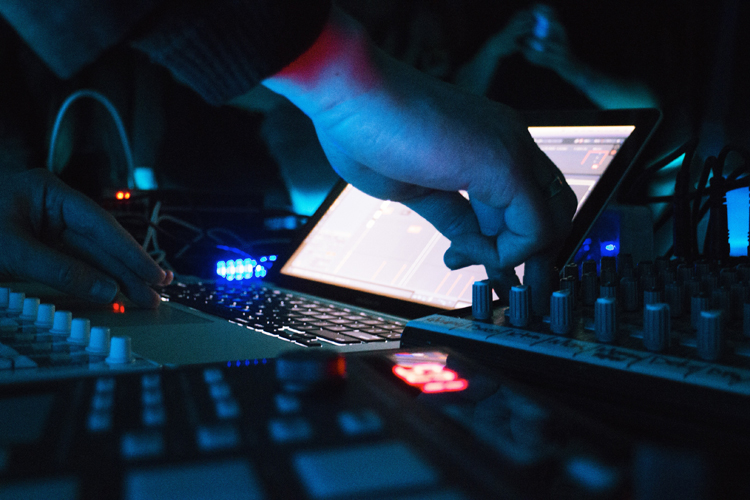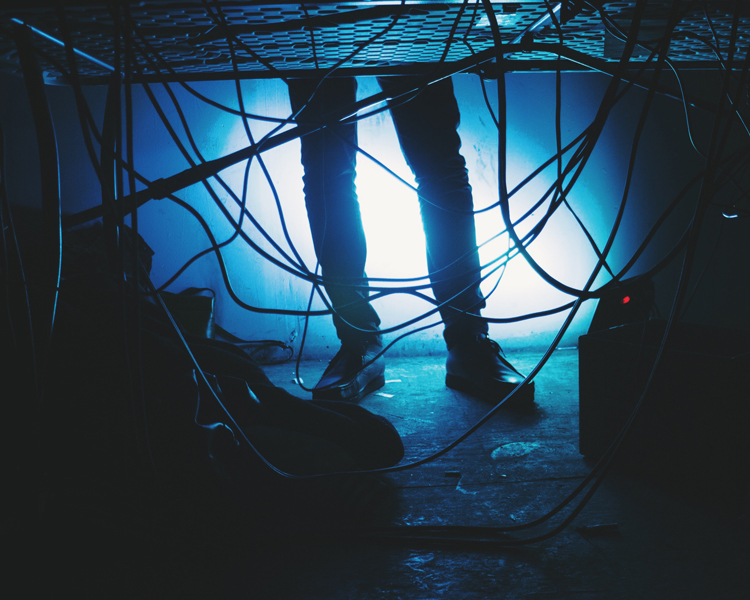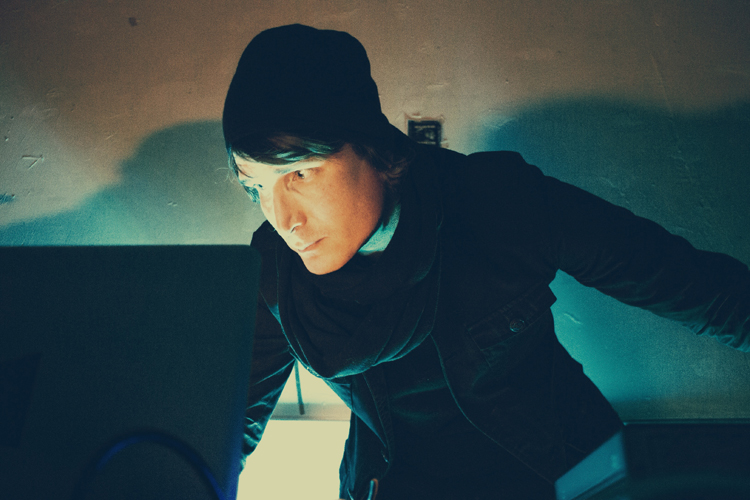A rave that would make anything in the 1990’s proud. A masterclass in techno. And a meeting of likeminded friends. It was the perfect storm.
My experience of Voices From The Lake before this party was as much as a large pair of headphones. I’ve heard their live sets were always pretty special and given this party was set to be held in a working glass-blowing factory, I could’t have imagined a better venue to be introduced to Donato Dozzy and Neel.
After grabbing some food and drinks in Capitol Hill, we headed downtown to meet up with fellow friends and music-heads Dustin Morris (Dewtone) and Jamie McCue (Silent Season). Sharing our excitement over what was to come, Dustin and Jamie had already checked-out the venue a few hours before; in the middle of nowhere under the freeway.
Turning up to a small entrance and a small queue at 10.30pm, we were greeted by smiling faces and friendly doormen – a rarity for today. Turns out I had bought one too many tickets so they kindly refunded me the extra. A short walk down a corridor with VFTL posters haphazardly slapped across emergency signs, the rumble from Eddie Lee was already at full techno BPM, pinging off the walls and around the corner.
The room was busy and people were already in mid-flow – pretty hard not to considering how big Eddie Lee was playing. The space was silhouetted with machinery, chains hanging from the ceiling and indistinct equipment ushered into each corner. A small table had been setup away from the main stage adorned with the LED’s from some very intricate gear – Rafael Anton Irisarri anxiously keeping guard against a crowd already rocking. A quick chat with Rafael, he was due to be on shortly, already changing up his set in his head to keep pace with the room. He later told me it’s pretty easy to do this when you have all the samples and equipment locked down – but people like him make everything seem easy… not many get to execute it so well.
Eddie Lee had done the job. The room was already buzzing and our immediate group was pretty excited to see how Rafael would react. Dimly lit but his equipment and arching over a low table, Rafael reset the crowd with his signature deep techno. To be perfectly honest, my review of the music from here-on-in is going to stop short, and be fuzzy at best. Rafael ditched any ambient stuff he may have had lined up and went for straight-up deep rumbling darkness. The odd clap crescendo and dirty bass made-up on the fly; Rafael’s set took the room up a few notches and before I had any time to reflect on what just happened, Raf hit the kill switch in the middle of a track – a pause like a shot of adrenalin. Before having a chance to realise Raf had finished, Voices From The Lake dropped their first beat and the room swivelled to the far corner to see the Italian Duo getting started.
As I said, i’m not going to be able to tell you exactly what happened from here on. Even my friend Dan who was nominated photographer for the night, failed to take one single photo of the Italians. We were gone. We were in.
I’m not too savvy on their setup (maybe one of you can help), but Dozzy seemed to be playing records, cutting in basslines as Neel headed up programming. At points, their beats where mismatched. At points, they looked at each-other with acknowledging glances- speed it up, slow it down, louder, bigger. This added to the magic of a performing duo. They stuck two middle-fingers up to anyone who doesn’t respect a laptop-oriented performance with a raw, mesmerising show and the whole room 100% locked-in. It was layered, it went to silly heights, it was dirty, it was massive.
Being surrounded by friends who you know are in-tune with what was happening made it even better. Everyone was loving it, and through the dimly lit room, warm with flickering furnaces and live glass-blowing from one corner, there were smiles for days. No pushing, nobody walking around getting in your way, and everyone with utmost respect for others, the music and the DJs; it was a special night that I don’t think will ever be replicated. the comments on the Facebook event page are proof it was just me and my friends enjoying the night – it was felt throughout the room.
Voices From The Lake played for four hours and had three encores. How they had enough material, or kept that room on a high for that long, is a testament to their ability as musicians. But, as a formula for all great nights, it wouldn’t have been the same without some great warm-up artists (Rafael and Eddie), like-minded friends (Dan, Dustin, Jamie, Raf, Rita, Tim), an amazing venue, a ridiculous sound system and a couple of hundred ravers. I didn’t realise parties like this could still happen. Thank you Seattle.
Incase you missed it, VFTL put together a lovely ambient mix last week for Beats in Space – far removed from what we experienced in Seattle, but a lovely hangover cure.
Header image courtesy of VFTL Facebook page (I told you we didn’t get any pics of them!) Above images of RAI taken by Dan Jones before he completely lost the plot on the night.










